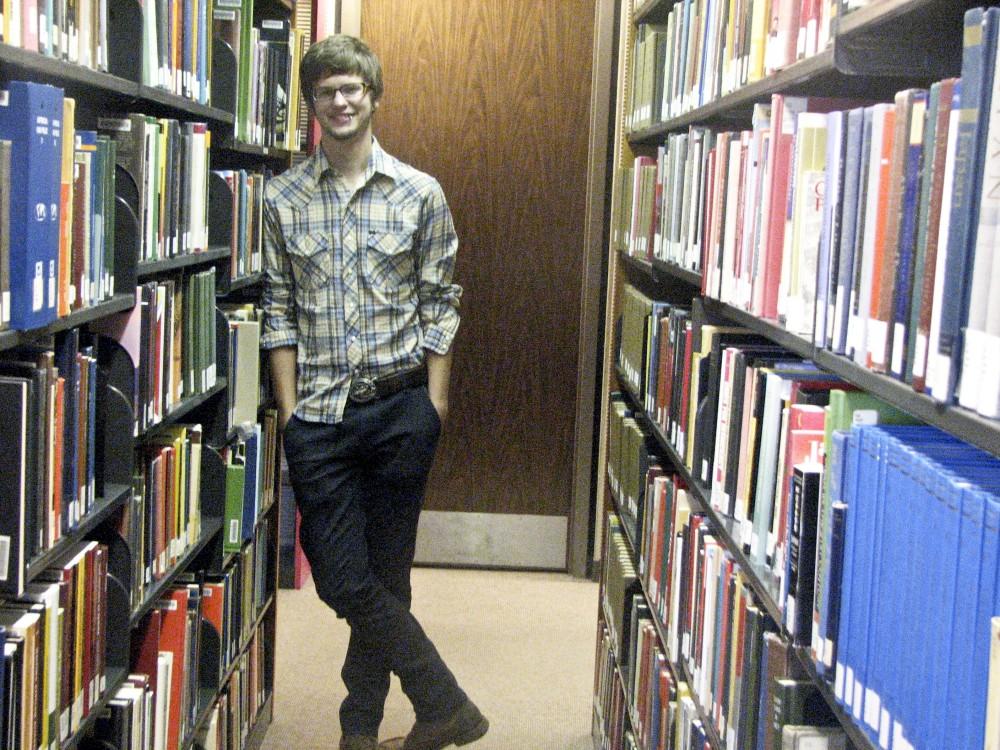Artist profile series: writer Tom Gunnels

Artist Tom Gunnels
Oct 7, 2010
Tom Gunnels rarely likes to talk about himself and loathes being interviewed. Part of this discomfort, he said, comes from as far back as high school.
“I was a really awkward and introverted kid, so I did a lot of reading,” Gunnels said. “I think slowly through reading a lot of really awesome novels got me into just storytelling in general.”
Gunnels has since nurtured this side of himself and, when he reached college, began channeling his observations into writing – essays, film scripts and short stories.
That is how he came to be one of five finalists in the nation for the Norman Mailer College Writing contest. The competition is rigorous and typically gets thousands of promising submissions from university students across the country. To be a finalist is a rare achievement and comes with significant benefits – one of which being an almost assured placement in one of many respectable graduate writing programs, if in fact that is the route he wants to take.
Gunnels piece, “How to Tell a True Love Story,” began as single page prompt for professor Sean Prentiss’ advanced creative nonfiction class.
“I ended up liking the idea and going through tons of revision until it turned into a 24-page story,” Gunnels said. “So I wrote and rewrote and I thought I was going to submit it by the deadline regardless. Sean kept telling me he thought I could end it somewhere else.”
Gunnels rewrote the ending three times until he finally found the ending he was looking for as he sat downing a pitcher of beer. After submitting the story, it was eight months before there was any response.
“I thought either A, I’ll submit it and it’ll be eight months, the story sucked and I won’t hear anything back … or the second option, I’ll hear something back and I’ll be like, oh this must be a good story and keep working in it,” he said.
The story is about Gunnels’ grandparents and more specifically about his grandfather, who struggled with his wife’s slow metal deterioration from Alzheimer’s disease.
“‘How to Tell a True Love Story’ is a love story,” Prentiss said. “It is a story of heartbreak about his grandparents. It is a story that asks the reader to live in the world of emotion. It is thoughtful and quiet and beautiful. It is also a braided essay that weaves two sets of grandparents together with thoughts on Lake Huron.”
Gunnels described his story as not being complex or written in a lofty language. He called it accessible and straight to the point.
“It’s basically a story that’s like BAM! My grandmother has Alzheimers and it sucks,” he said.
While it may be very straightforward, Prentiss described Gunnel’s work with the words of poet Richard Hugo, “risk sentimentality”.
“Tom, like so many of my advanced creative nonfiction students, takes risks,” he said. “These may not be noticeable when you look at the page, but once you read the piece, it’s impossible to miss these risks. Tom risks sentimentality. Tom is not afraid to talk about emotions, to ask the reader to feel. Tom also uses speculation. He looks into the future, toward what he doesn’t know.”
The hardest part for Gunnels while writing this story was not the mechanics – plot, grammar and the like – but dealing with the themes and emotions that run the narrative while also being so close to the characters that live in reality and the story.
“My grandfather tells everyone, ‘Watch what you say around Tom – he’ll write about it.’ I mean, my grandpa read it, but he didn’t know what kind of story I was writing,” he said. “The first day I was able to see him and talk to him after he read it, I could tell he didn’t know what to say. He cried a little, but I think it was because he didn’t realize how much attention I was paying to little things in my grandparents’ life.”
Gunnels said despite writing about all the complications, expectations and sad things that happened, it was a very worthwhile exploration on the people he cares deeply for in his life.
“I’ve found it’s easier to write around yourself,” he said. “The story is my grandparents’ love story, but it’s also my love story too because I love them and I’m able to write about myself indirectly using my experiences with other people to shed light on my thoughts, my experiences without actually having to write about myself.”
Right now Gunnels is busy with his work on two separate film productions along with his job as a professional videographer, creating advertising reels for various companies.






















